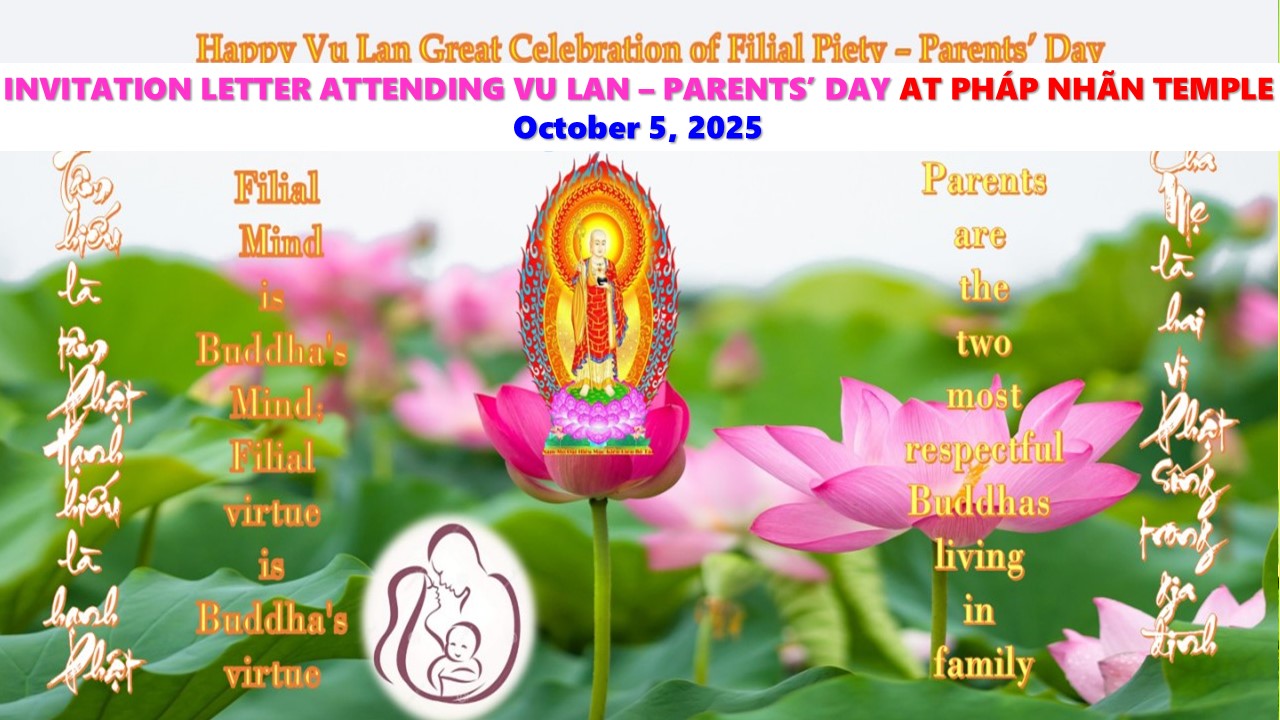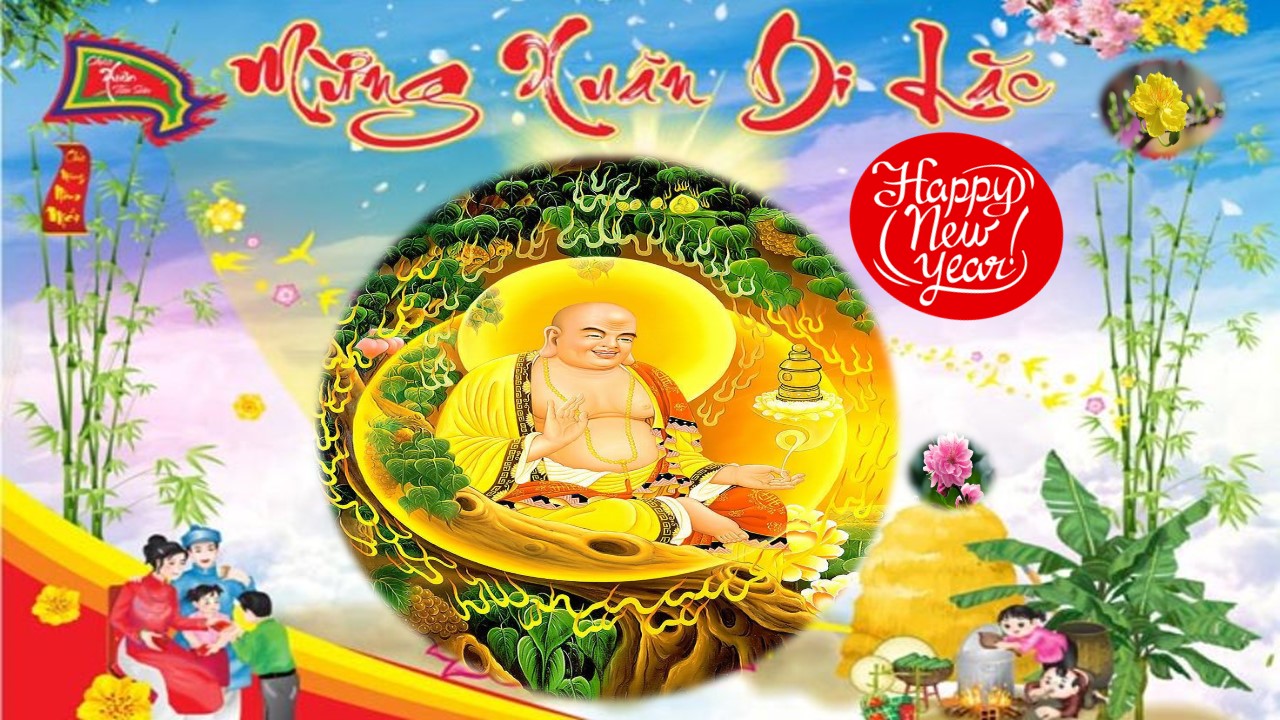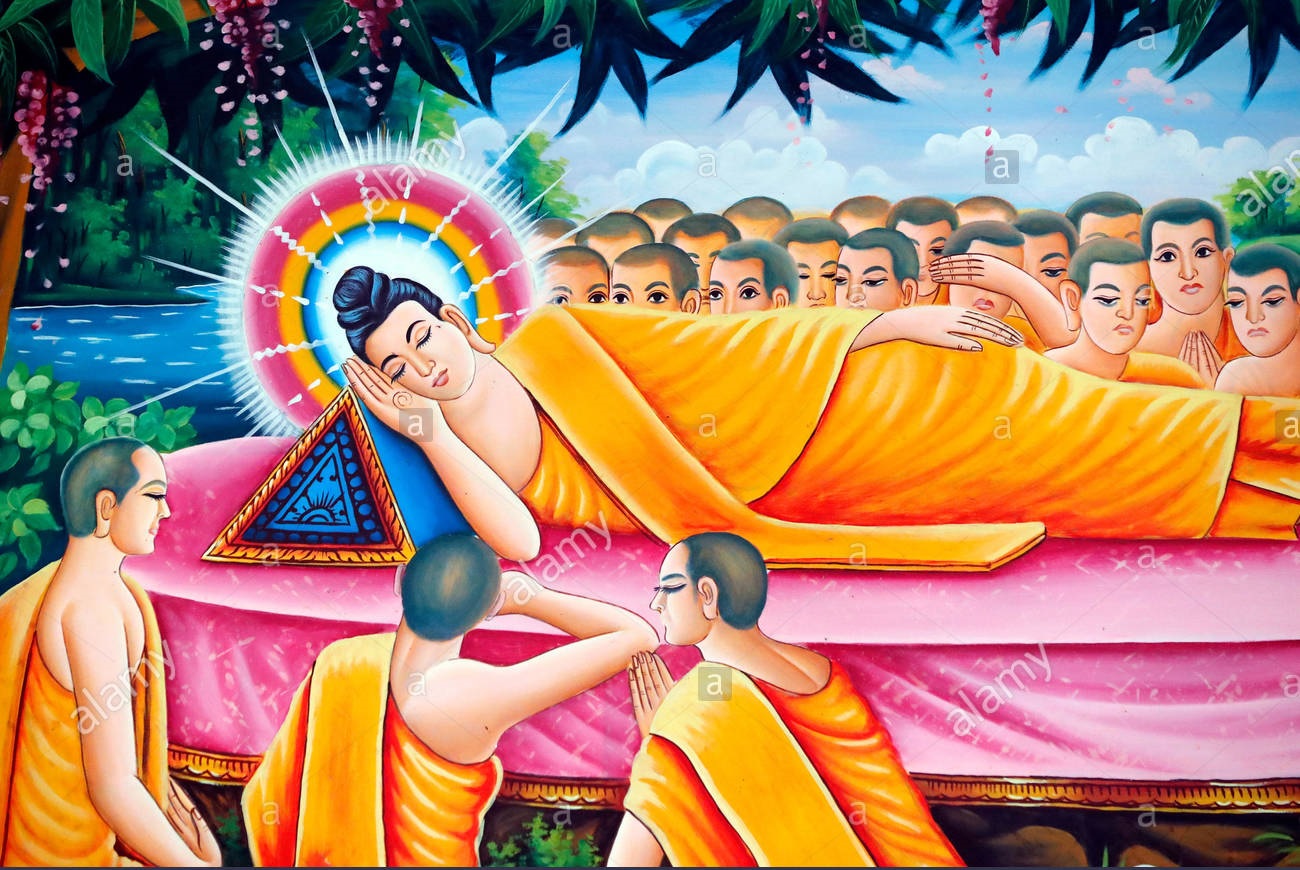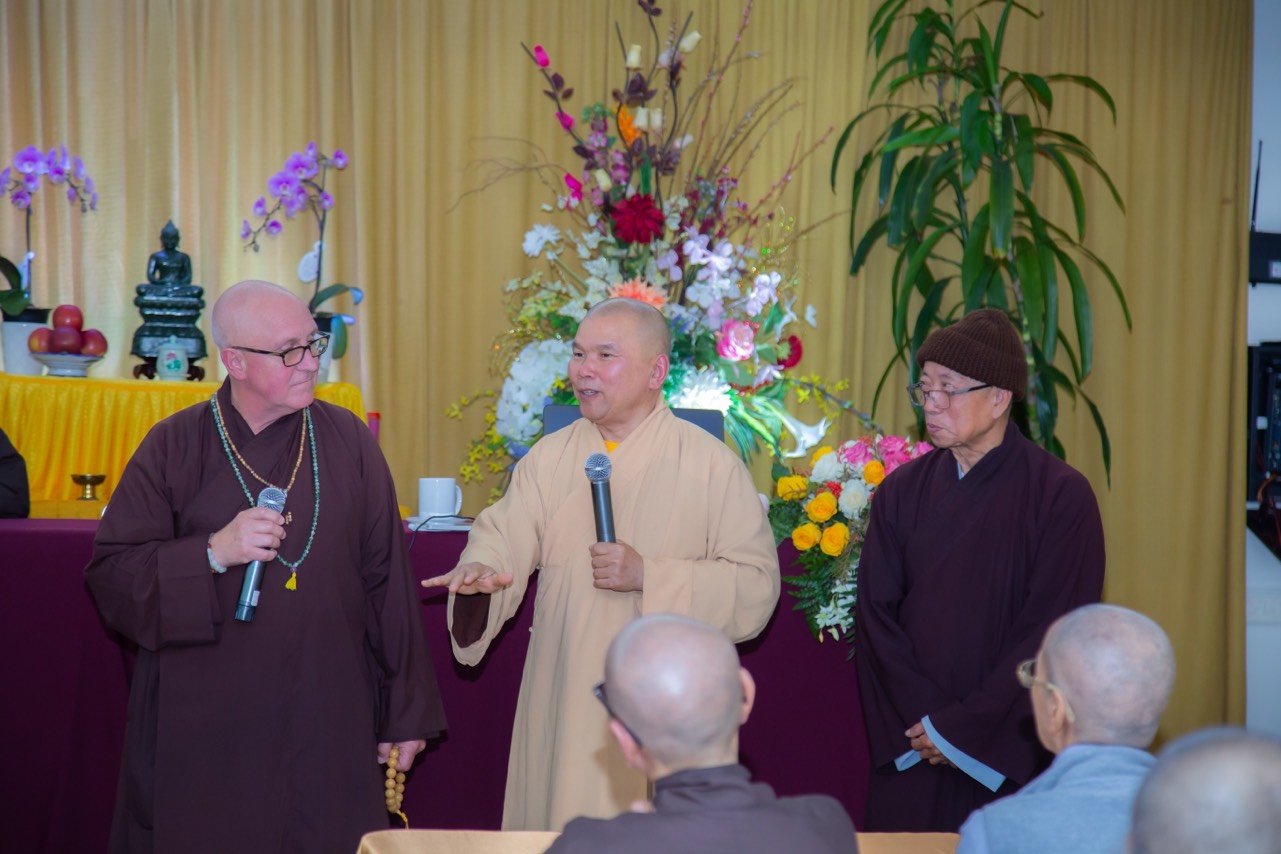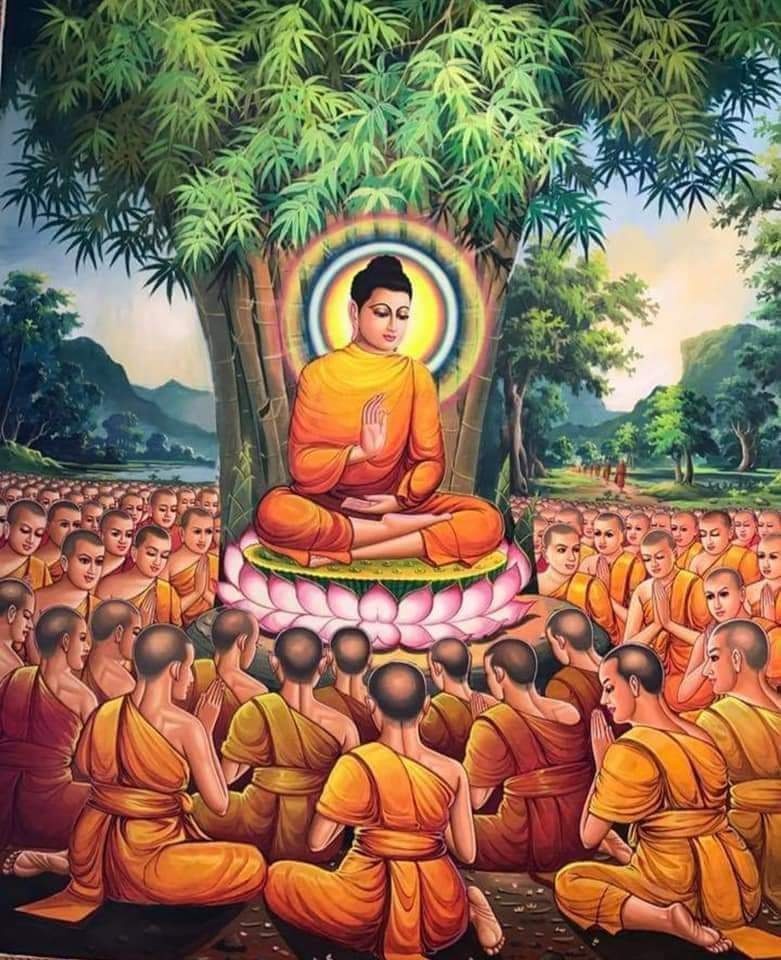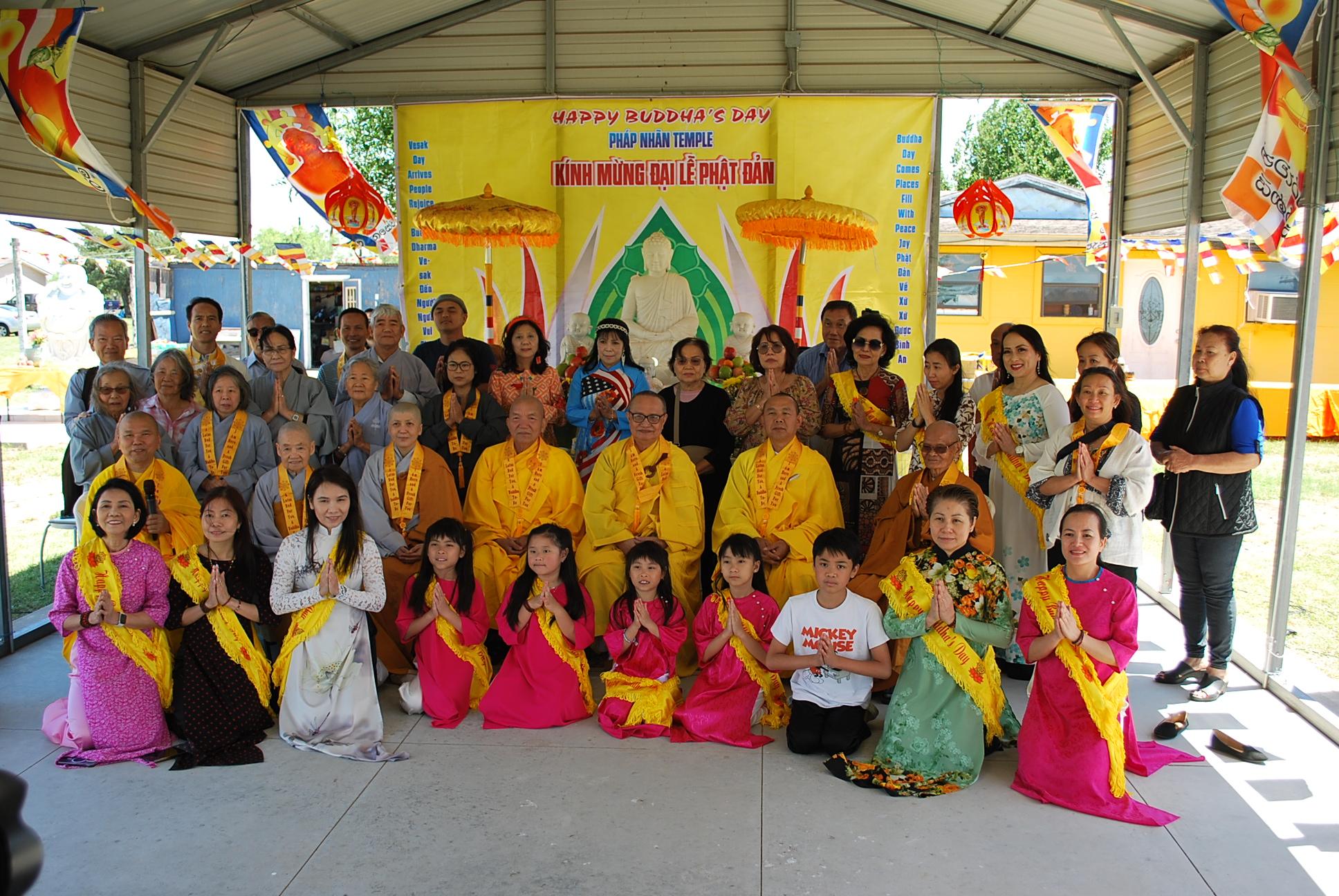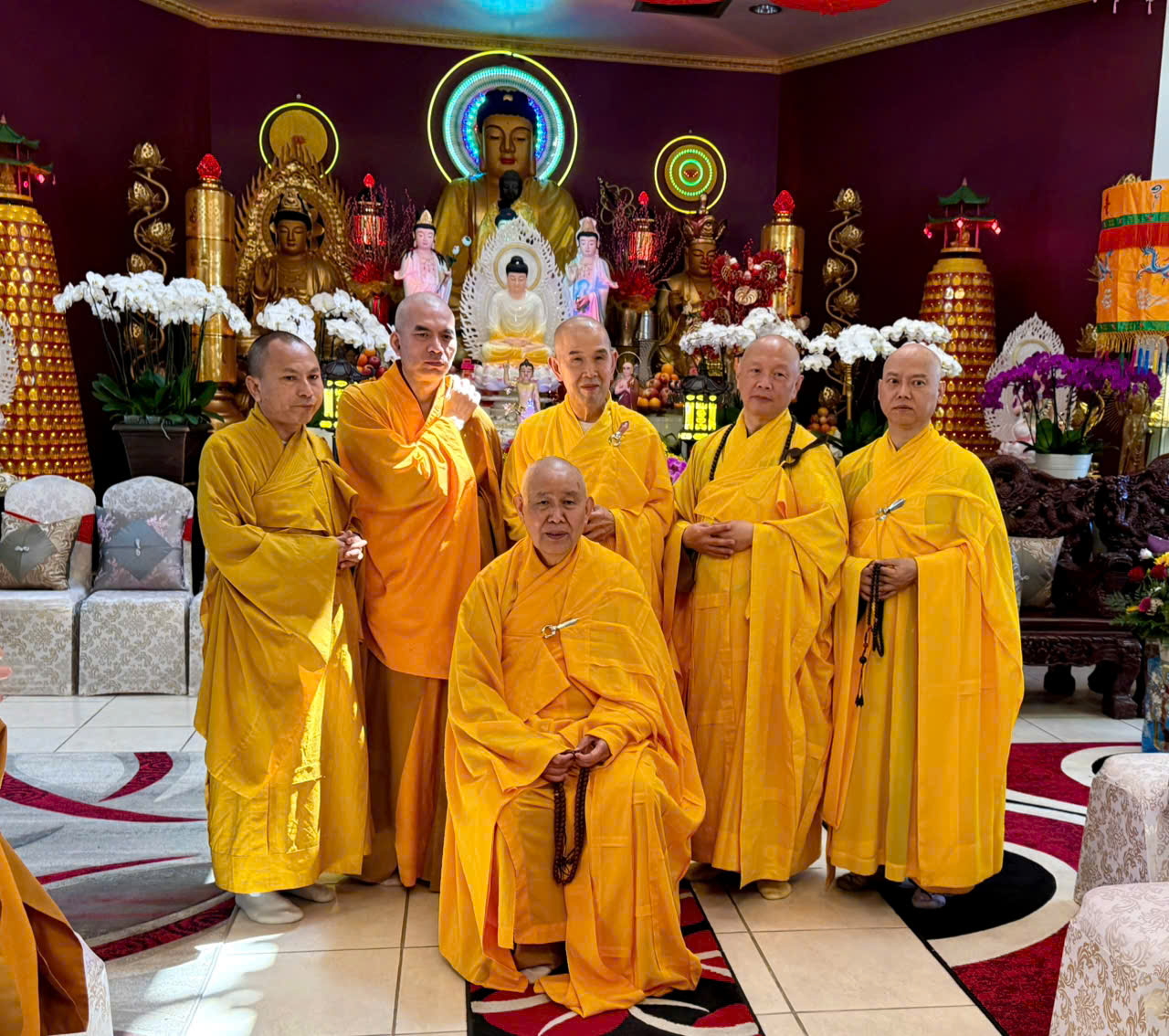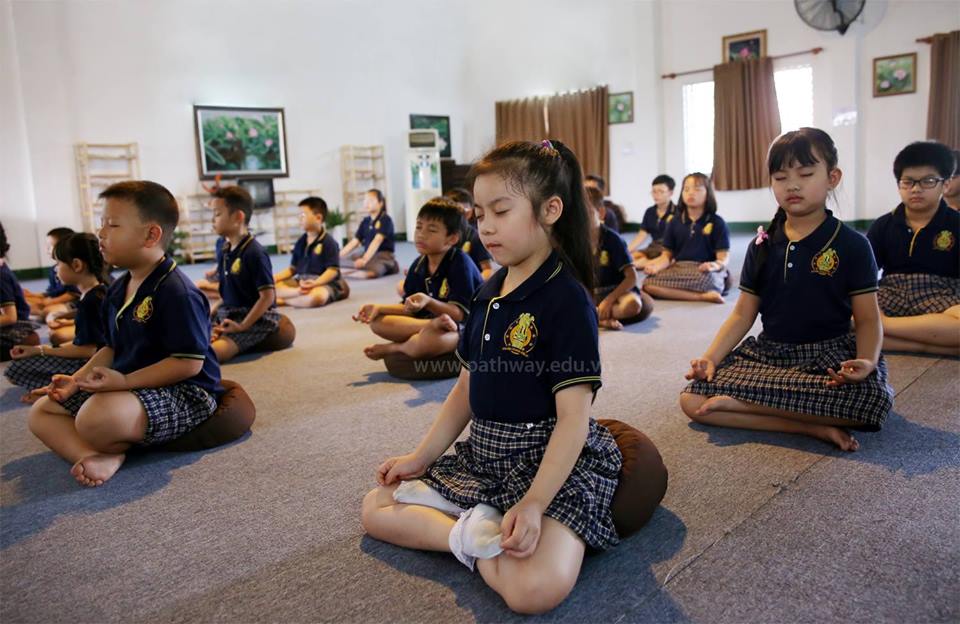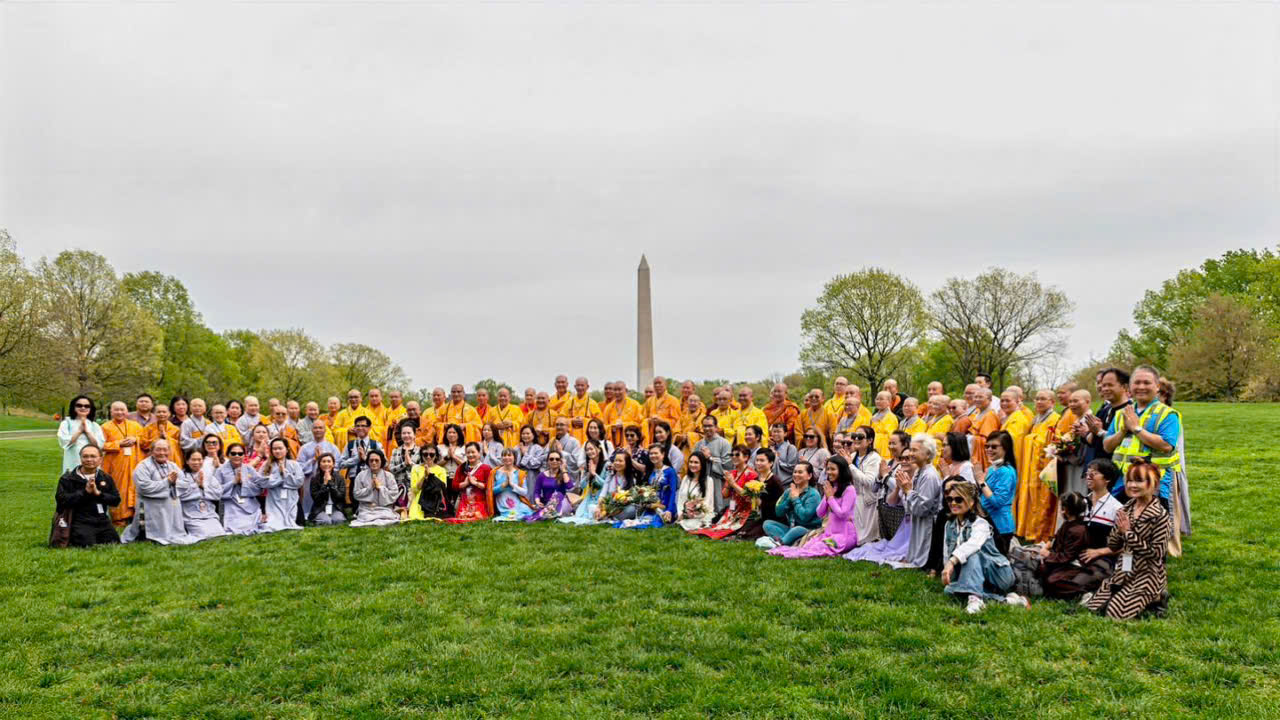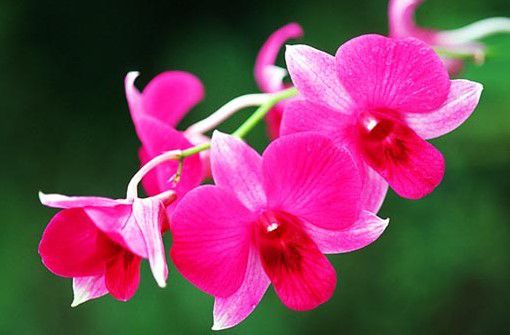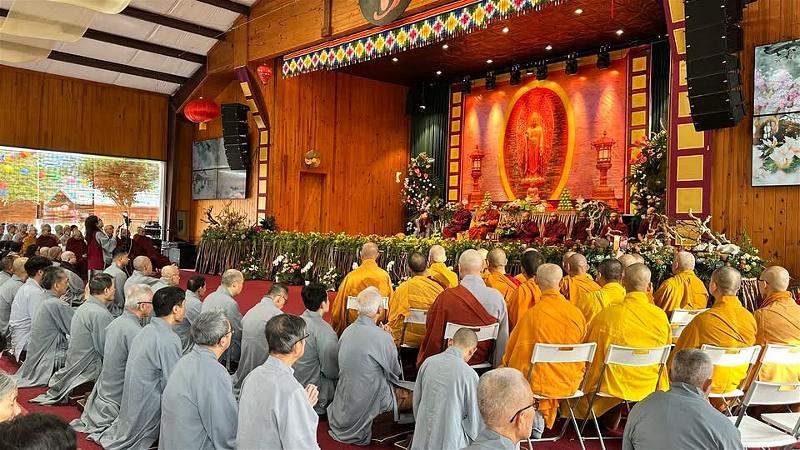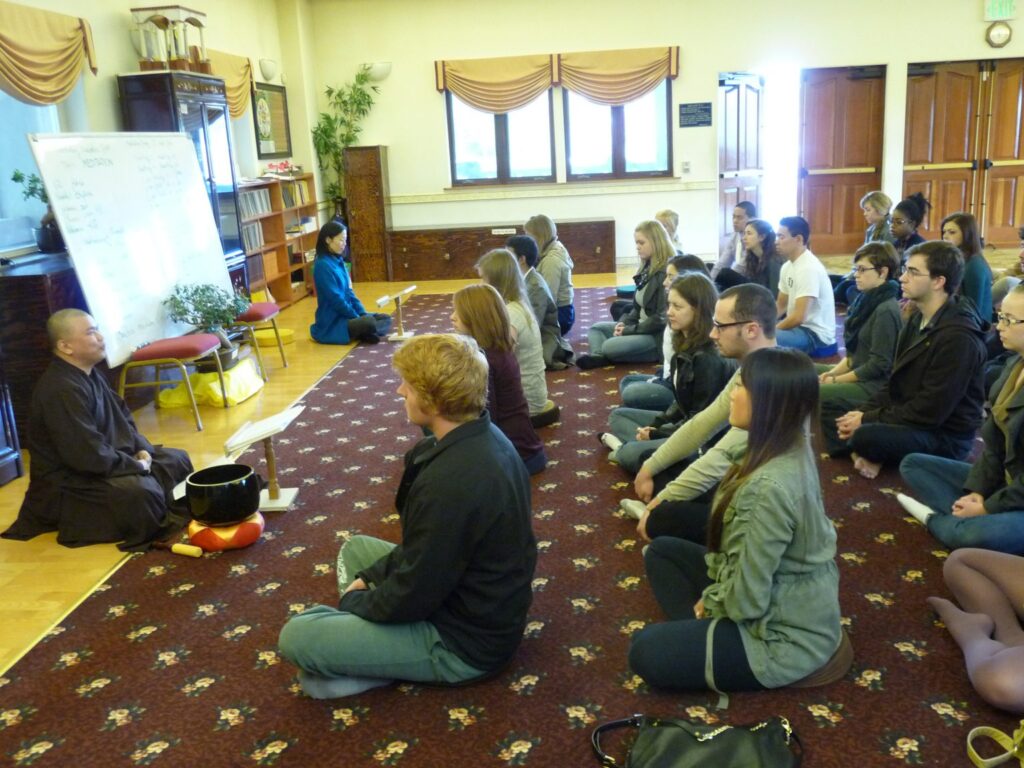
Venerable Thích Trừng Sỹ guiding Meditation Practice for Students of Seattle University at Cổ Lâm Temple in Washington State
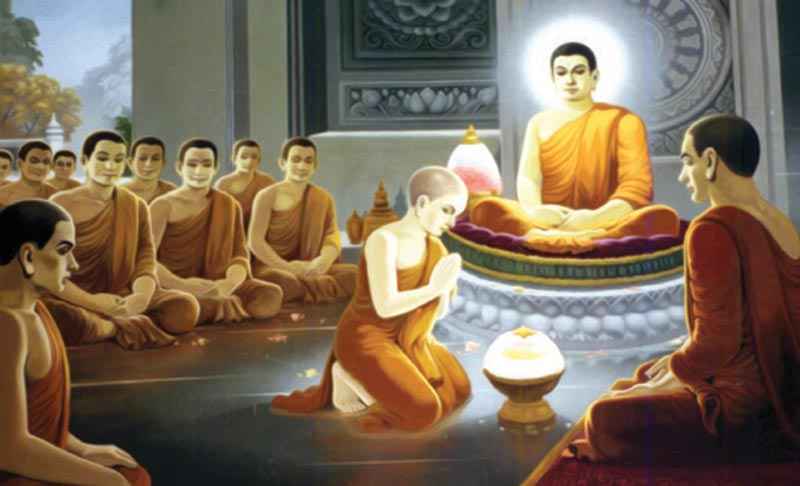
INTERRELATIONSHIPS BETWEEN TEACHERS AND STUDENTS, STUDENTS AND TEACHERS IN BUDDHIST EDUCATION
As we know that everyone and everything in this world have inter-relationships and inter-connected things very closely, either indirectly or directly between people and people, between people and animals, between people and plants, between people and natural environment, so on and so forth. Of all the inter-relationships, the relationships between people and people, especially the relationships between teachers and students, students and teachers in Buddhist education are presented and discussed in this article.
In the topic of this article, we encounter the phrase Buddhist education; Buddhist education is divided into two different words: Education and Buddhist education. The Pāli words of “education” are “Sikkhā, Sikkhana, or Sikkhāpana” which denotes teaching, lecturing, instructing, training, studying, learning, etc.,[1]and also means training and developing virtue and spirit for people. In Buddhism, education is to help people consciously learn and practice the Buddhadharma every day to recognize, purify, and transform mental and physical afflictions right in the present life.[2] Moreover, education not only teaches some means of earning livelihood to people, but also helps people live their solid spiritual and moral lives.[3]
Buddhist education, which means to avoid doing evil, to do good, to purify one’s mind,[4]is the process of cultivating, recognizing, modifying, and transforming the wrong into the right, the unwholesome into the wholesome, ignorance (Avijjā) into clear understanding (Vijjā),[5]human nature into Buddha nature, suffering into happiness, defilements into Bodhi, etc. Buddhist education aims at training us to become people of mindfulness and awakening, steadiness and carefreeness, peaceful joy and happiness like an awakened One.[6]
The object of education and Buddhist education is people; the people here are the people who are mindful and aware have many close relationships, understood as teachers and students, and vice versa.
Indeed, in Buddhist education, the interrelationships between teachers and students, students and teachers all have specific relationships that are linked together by transmission, continuation, education and train of talented and virtuous people in the spirit of mutual assistance, mutual affection, mutual love, mutual respect, mutual benefit, including self-benefit and altruistic benefit through the practice and application of the Buddhadharma in daily life to benefit the many right here and right now in the present life.
As you know, teachers are the forerunners of the previous generation understood to be the ones who transmit, inherit, and guide the noble, righteous, and correct path to the next generation. Students who are the followers of the next generation are understood as guided people with the ability to follow the path of love and understanding the teachers have transmitted and instructed. Thus, both the guide and the guided people have very close interrelationships and interdependencies in learning, practicing, applying, and tasting the peaceful flavor of the Dharma in order to bring peace and happiness to the majority right in the present life.
According to the inter-being views, teachers and students, students and teachers are the inheritors, transmitters, and connectors from many previous generations to present generations and future generations. Teachers who are people of the previous generation have the responsibility to connect mindful manners, fine deeds, right thought, right speech, and right action of the teachers in their previous generations, and transmit them back to the next generations. Students who are the people of the younger generation have the duty and responsibility to connect bodily teachings, verbal teachings, and mental teachings of their teachers, and re-transmit them to their future disciples.
Thus, teachers and students are both transmitters, successors, guides, and inheritors, but both teachers and students have the ability to learn the Dharma, understand the Dharma, practice the Dharma, preach the Dharma, and protect the World-Honored One’s Dharma right here and right now in the present and future life all over the planet. When understanding and practicing so, both teachers and students have the capacity to bring Buddhism to the future stably and freely through the practice and application of the Buddhadharma into their daily lives to benefit themselves and other people right in this life. Therefore, the relationships between teachers and students, students and teachers are very special, important, friendly, close, and tight relationships.
We know the interrelationships between teachers and students are mentioned in the Thiện Sinh Sutra as in the Southern direction as follows:
To the teachers, the students have the five duties: 1/ Being respectful, polite, and willing to help the teachers to do the necessary things. 2/ Knowing to obey the teachers’ teachings. 3/ Knowing to listen and learn about the good things from the teachers. 4/ Having to have the spirit of learning with teachers about new and good things that you do not know yet. 5/ Knowing to practice, apply, and create something to have been learnt. Conversely, to the students, the teachers also have the five duties: 1/ Teaching their students right view, right thought, right speech, right action, right livelihood, right effort, right mindfulness, right concentration and meditation. 2/ Guiding students in pedagogical methods. 3/ Do not hide knowledge, and wholeheartedly impart knowledge and life experience to students. 4/ Transmitting bodily teachings, verbal teachings, mental teaching to students. 5/ Expecting students to become talented and virtuous people and better than teachers.[7]
On the other hand, we know the interrelationships between teachers and students are also mentioned in the Dharma Inheritance Sutta (Dhammadāyāda Sutta) Number 3 of Majjhima Nikāya via the practice and application of the World-Honored One’s Dharma in order to bring good reputation, prestige, manners, harmony, solidarity, strength, stability, and peacefulness for themselves, for learning and cultivation assemblies, for the community, and for society.
In the process of propagating the Dharma and serving beings, first of all, both teachers and students must be those who vow to live their lives of virtue, exemplar, mindfulness, and awareness through inheriting the Dharma, better than inheriting material possessions. However, inheriting the material possessions properly at the right people, at the right works, at the right places and at the right time, both teachers and students can benefit many people because they are awakened practitioners vowing to live their lives of awakening, walking together on the happy path, practicing liberation, and making life beautified.
We know that the inheritance of the Dharma brings a literal meaning, its figurative meaning means both teachers and students together learn the Dharma, understand the Dharma, practice the Dharma, protect the Dharma, preach the Dharma, and apply the Buddhadharma in their daily lives to bring peace and happiness to themselves and other people right in this life. Inheriting the Dharma means the process of cultivation and transformation of teachers’ and students’ bodies and minds. In the process of this cultivation, both teachers and students have the capacity to transform the unwholesome seeds such as greed, anger, delusion, arrogance, doubt, wrong views, etc., into the wholesome seeds such as almsgiving, loving-kindness, compassion, wisdom, modesty, right view, etc.
When inheriting the Dharma diligently and effortfully, both teachers and students have the ability to bring happiness to people, joy to their families, and peace to the world in the light of loving-kindness, compassion, and wisdom of the World-Honored One. Furthermore, we should understand that teachers and students here can be whether monastics or lay Buddhists. Both kinds of those people that cultivate the Buddhadharma well can bring authentic peace and happiness to the many on over the planet.
Through learning, understanding, practicing, and applying the Buddhadharma into their daily lives, they are truly happy teachers who can change the world and dedicate the fruits and flowers of peace and joy to life. Indeed, those who inherit the Dharma of the World-Honored One stably and peacefully, their bodies and minds are always at ease, light, and relaxed in their mindful breaths, thoughts, words, and deeds. With applying and practicing the Buddhadharma diligently, peacefulness and happiness have the ability to permeate and cool their bodies and minds.
On the other hand, those who inherit material possessions only know to benefit individuals, have no sense of practice for themselves and other people, they will certainly be ridiculed and criticized by the world. Indeed, the inheritance of such material possessions is only for personal enjoyment, not for the purpose of practicing and benefiting oneself and other people, then in this case, it only means selfishness, no generosity, and no altruism. Material possessions here are understood as clothing, utensils, food, drinks, vehicles, houses, etc.
Inheriting material possessions offered by almsgivers, both teachers and students that must have a sense of knowing enough depend on it to cultivate, to nurture their bodies and minds, to propagate the Dharma, and to benefit living beings. Inheriting such material possessions can bring many benefits for oneself and other people, both teachers and students will never be ridiculed and criticized by the world.
Those who have cultivated, inherited, and used the material possessions properly with the right people, at the right places, at the right jobs, and at the right time, can reap and create more merit. People who do not practice cultivation, or practice half-heartedly, inherit and use the material possessions with the wrong people, in the wrong place, in the wrong job, and at the wrong time, they create little merit, or sometimes they do not reap any merit at all.
Through the process of cultivating diligently and inheriting the material possessions properly, we can create more merit; the merit we obtain is thanks to the process we know how to do charity, such as supporting poor students, building houses of gratitude, helping the needy, etc. With merit and virtue, we practice strong and long-term cultivation, live in accordance with the Buddhadharma in the spirit of selflessness and altruism.
For typical example, money offered by donors is used for raising monastics to cultivate and train them to become talented and virtuous people, we only use that money for nurturing the monastics. Conversely, if we use that money for building a Temple, casting a bell, creating a statue, those affairs all mean working for the Triple Gem (the Buddha, the Dharma and the Sangha), but in this case, all of the above actions have inappropriate meanings because we use that money with the wrong people, in the wrong place, in the wrong job, and at the wrong time.
However, there are times when we use the money offered by donors inappropriately, at the wrong time, in the wrong place, and in the wrong job. For instance, money is offered by donors for building a Temple, a Stupa, we use that money for printing Scriptures. What we did like that was not right. As good practitioners, we try to correct and transform wrong thoughts, speeches, and actions into right thoughts, speeches and actions to bring confidence and prestige for ourselves and for the communities. Therefore, if the money is used to raise the Sangha and train talented and virtuous monastics, then we only use that money to take care of the Sangha. Money to build the Temple, we use that money only for the construction of the Temple.
Through the above-mentioned things, we need to be careful and fully aware of inheriting material possessions of almsgivers. Whether small things or big things we inherit material possessions in the right way in the sense of mindfulness and awareness, this has the capacity to bring peace and happiness to the majority right in the present life. At that time, what we have done when people hear and see, they generate joy and support us right away. The energy of cultivation, life experience, the light of compassion and wisdom, peacefulness and happiness in us has the ability to illuminate many people.
Thus, inheriting material possessions, we consume an amount of gold a day for charity works in the right people, at the right job, at the right place, and at the right time, we feel happy and secure, but other people also feel glad and joyful. If inheriting material possessions for charity is not appropriate, not in the right people, at the right job, at the right place, and not at the right time, we consume a little bit of gold a day, our mind feels unsecure and unhappy, our heart feels uneasy and uncomfortable. Sometimes we are criticized and reproached by the world.
Donors gets very much merit, but we get very little merit because we use the donors’ offerings in the wrong way. Those who inherit material possessions do not make efforts to cultivate and transform internal mind, in this point, it is not easy for them to reap merit and virtue. Once they don’t get merit, how can they get virtuous blessing?
In this case, a person offering who is a donor is likened to a knife, the offered person who is a practitioner is likened to a grinding stone. If receiving material possessions from almsgivers, the practitioner who does not cultivate diligently does not live a life of mindfulness and awakening, uses donations from almsgivers to do the charitable things not appropriately, not in the right people, at the right job, in the right place, and not at the right time, the grinding stone of the practitioner becomes more and more worn, namely virtuous blessing of the practitioner gets more and more decreasing. Conversely, the almsgiver’s knife is sharper and sharper, namely virtuous blessing of the almsgiver gets more and more increasing.
Virtuous blessing has no sign, but it manifests itself in the cultivated life of each of us. Virtuous blessing can be seen via the peaceful and happy life of monastery, in which teachers and students are wise people and practitioners vowing to live their lives of awakening with harmony, love, and understanding of fellow practitioners, sisterhood, and brotherhood in order to jointly practice the Buddhadharma and benefit human beings.
Being aware of it very clearly, we know how to practice well, live a life of mindfulness and awareness, know how to use material possessions offered by almsgivers intelligently to do appropriate charity work, our trust and prestige will grow up. When we hear what we do righteously, everyone is happy and willing to support us both materially and spiritually. When understanding and practicing so, teachers, students, along with almsgivers feel happy in their hearts. From here, peace and happiness have the ability to permeate and cool the body and mind through the practice and application of the Buddha’s teachings in their daily lives to benefit the many right in the present life.
Thus, the Dharma inheritance and the material inheritance have been discussed. Next, we will continue to discuss the aspects of knowing gratitude and remembering gratitude between teachers and students, students and teachers in the Ceremonies of Thanksgiving or Grateful Repayment of Buddhism.
As we know every month in the early morning, the monastics in the different Buddhist Temples usually perform the Thanksgiving Ceremony. In this Ceremony, they wholeheartedly pay respects to different kinds of gratitude as follows: Gratitude to parents for their giving birth and upbringing; gratitude to the Buddha Jewel, the Dharma Jewel, and the Sangha Jewel for giving us bodies of virtue, meditation, and wisdom; gratitude to teachers for their teaching, transmission and instruction; gratitude to almsgivers for their support and donations; gratitude to the national heroes for building and defending the country; gratitude to the countries where you were born, have grown up, lived, and worked; gratitude to healthy natural environments for the auspices and skillful protections of people; gratitude to Patriarchs for their Dharma propagation and service to humanity from ancient time until the present time; gratitude to disciples for their Dharma inheritance and continuation, so on and so forth.
Of the different kinds of gratitude, in this article, the writer merely mentions the good and intimate relationships between teachers and students, students and teachers only. In a Repayment Ceremony, apart from chanting and paying respects to the kinds of the above-discussed gratitude, practitioners still pay respects to the following gratitude between teachers and students. To express deep respect and esteem to teachers, students pay homage to their teachers like this. “We the disciples who would like to thank our teachers for your guardianship, protection, and instruction, bow down and pay homage to the Buddha, the Dharma, and the Sangha residing permanently in many directions.”
In the process of Dharma cultivation and learning, students learn a lot of beautiful words and nice ideas, especially life experience and cultivation experience from the first teacher and other teachers. In addition to learning directly and indirectly from the Dharma teachers, the students also learn many things about virtue, education, science, medicine, philosophy, etc., not only from Dharma teachers, but also from secular teachers, the students are thankful and grateful to them deeply.
According to the culture and spirit of upward and good direction, those who teach us a life experience, a good speech, a good meaning, a useful and practical work are our teachers. Indeed, in Buddhist education, teachers often play very important roles of the guides showing the disciples the path of peace and happiness. This peaceful path is likened to an interconnected eight-lane freeway. Each lane represents a right thing, eight lanes symbolize eight right things including: “Right view, right thought, right speech, right action, right livelihood, right effort, right mindfulness and right concentration”[8]
Eight lanes are gathered in a path, eight right things are collected in peace and liberation; peace in cultivation, liberation in practice, and application of the Buddhadharma in our daily lives to benefit human beings. One is eight. Eight is one and all. Both eight and one, one and eight support together like image with its shadow. Both teachers and students, students and teachers take refuge in and support each other in their lives of cultivation, peace, and happiness, together towards enlightenment and spiritual liberation like waves with water, they cannot separate from each other. When they understand and practice so, both teachers and students feel happy and peaceful through studying the Dharma, understanding the Dharma, practicing the Dharma, protecting the Dharma, and spreading the Dharma. Both teachers and students have the ability to bring the flowers and fruits of peacefulness and happiness right here and right now in the present life.
Next, in order to express their happy hearts when they see that the students are better than the teachers, the teachers start to think of joy and encouragement as follows: Children are better than parents whose house has virtuous blessings, the students are better than the teachers whose school has virtuous blessings, the disciples are better than the teachers whose Temple has virtuous blessings. Of course, parents and teachers are better than their children and disciples, their families and Temples have virtuous blessings.
We know in secular education as well as Dharma education, teachers always expect next generations to be better than previous generations about aspects of talent, wisdom, virtue, etc. Indeed, in the contexts of Buddhist education, schools and the Temples are seen as environments of Buddhist studies in monasteries and in maha viharas, students are seen as disciples capable of applying Buddhadharma into everyday life to help life add joy and lessen suffering right in this world.
Moreover, we know that when training young generations, fathers, mothers and teachers always wish their children, students, and disciples to be better than themselves. With a bright view of the future, the following generations are better than the predecessors, especially in talent, wisdom, and virtue, they are capable of building and developing peace and prosperity, the Dharma, and the nation by the path of Dharma law and worldly law, namely the path with eight cultivation methods and applications in daily practice life to benefit sentient beings. When understanding and practicing so, everyone tastes Dharma joy and Dharma happiness right here and right now in the present life.
With the mind of educating and training, those who inherit and continue the Buddhadharma in the present and in the future, when applying and practicing the Buddha’s teachings into the daily life regularly, stably, and relaxedly, directing towards their own Buddha, teachers often initiate and pay respects as follows: “We disciples who are grateful to our disciples for their linkage of the light of the Dharma, bow down and pay homage to the Buddha, the Dharma and the Sangha residing permanently in directions.”
Indeed, when choosing themselves the directions of going brightly, peacefully and freely, both teachers and students vow to light up the light of the Dharma together, light up the light of love for the present generations as well as the future generations. They are authentic practitioners with the ability to bring peace, peacefulness and happiness to themselves and to others all over this planet.
Moreover, as practitioners practicing the awakening path, on the path of cultivation towards the upper, towards the good, towards peacefulness, happiness, and liberation for themselves and for other people, both teachers and students always understand and recognize their thoughts, words, and actions of mindfulness and awakening to benefit the many right in this life.
According to the annual practice, in the three months of the Sangha’s summer Retreat or Rainy Retreat (vassa vassa), there is a day to end the three-month retreat; that closing day is called the day of joy, the Tết holiday of monastics, facing each other to perform a ceremony to recognize what they had practiced in the dignified and pure Dharma center and to express their mutual respect and esteem and say:
“During the days of practicing Buddhadharma with the Great Assembly if I have something mindful or deficiently mindful, please beg fellow practitioners happily to show me the good things so I know how to promote and increase them; the non-good things for me to know how to correct and transform them. In this Dharma Center, I would like to sincerely acknowledge and be grateful to fellow practitioners for their instructions.
Realizing that if I have weaknesses caused by lack of mindfulness, I promise my heart not to repeat the last mistake, or if I have good and beneficial things created by right mindfulness, I tell my heart to try to maintain and promote the benefits to bring peacefulness and happiness to the many right in the present life.”
When understanding and practicing so, both teachers and students, students and teachers can together contribute to bringing the Dharma into life and making life more joyful and less suffering. In everyday life, lay Buddhists and monastics together understand and apply the World-Honored One’s teachings into their daily lives diligently, flexibly, mindfully, wakefully, stably, and relaxedly, they have the ability to bring joy and happiness for themselves and for other people in in the family, at school, in the workplace, in the office, and in society.
To sum up, through the above-mentioned things, the relationships between teachers and students, students and teachers are specific relationships in Buddhist education interconnected with one another by thoughts, speeches, and actions of love and understanding by love of teachers and students, by love of sisterhood, brotherhood, love of dharma friends, fellow practitioners, by love of the Dharma protection and Dharma propagation through the practice and application of the Buddhadharma in their daily lives to bring peacefulness and happiness to many people.
The intimate relationships which are very practical in the present are tightened together by the substance of cultivation, by mutual assistance, mutual affection, mutual love, mutual respect, harmony, and solidarity, by transmission and continuation, by guidance and inheritance of the Dharma of World-Honored One mindfully and consciously, both teachers and students, students and teachers that are practitioners of peacefulness and liberation have the capacity to protect, uphold and develop Buddhism in the present as well as in the future brightly and splendidly all over the world.
Respectfully wishing you full of peace, joy, stability, and freedom, and imbued with the Dharma of the World-Honored One.
By Thích Trừng Sỹ
https://phapnhan.org/tv/cac-moi-lien-he-tuong-tuc-giua-thay-co-giao-va-hoc-tro-hoc-tro-va-thay-co-giao-trong-giao-duc-phat-giao/
[1] See Pāli-English Dictionary. Eds. T. W. Rhys Davids & W. Stede, London: Pāli Text Society, 1921-25. (First Indian reprint, New Delhi: Oriental Books Reprint Corporation, 1975): 11 & 708.
[2] Rousseau J J A. Discourse on the Origin of Inequality. London: 1970: 169.
[3] Swami Sivananda. Religious Education. 1983, Ch. I, Bliss Divine, 1991: 126.
[4] Dhp. v. 183.
[5] Thích Nhất Hạnh. The Heart of The Buddha’s Teaching. New York: Parallax Press, 1999: 246-7.
[6] Dhp. v. 88, 97, 378.
[7] Dīrghāgama, Part II, Sutra 16, and Dīgha Nikaya, Sutta 31.
[8] See the Discourse on the Turning of the Dhamma Wheel (Dhammacakkappavattana Sutta) of Connected Discourses on the Truths. (Samyutta Nikaya, 56: 11)




